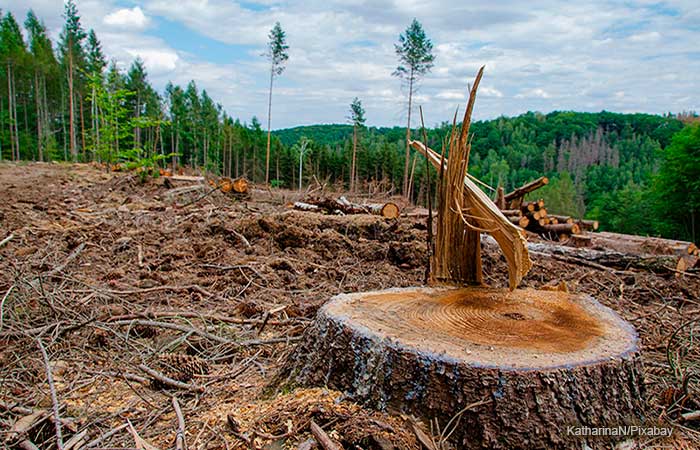FAQs about Deforestation of Forest

9. Why is deforestation in the Borneo rainforest considered an ecological catastrophe?
Borneo is the third largest island in the world Borneo, bigger than Spain. It is located in Southeast Asia, 1,600 km south of Vietnam, west of Papua New Guinea, and 3,500 km north of Australia. Borneo, called Kalimantan in Indonesian, is politically subdivided into three parts: Indonesia owns 72.6%, Malaysia 26.7%, and the Principality of Brunei barely reaches 1%. Borneo is inhabited by 16.4 million people.
The forests of Borneo, described by some as the Asian Amazon, until recently covered almost the entire island with flora and fauna among the most biodiverse in the world. But in the last 50 years Borneo rainforest has lost two-thirds of its trees and a big lot of habitats to the logging industry and other activities that have developed with unusual speed on the island.
“Until 1950, 96% of the island was primary forest, while a few years ago only 44% remained. 25% of the forest area has disappeared since 1980, and in Indonesia deforestation is occurring at a rate of two million hectares per year,” says WWF. Some scientists say that what happened in Borneo is the largest and fastest ecological catastrophe made by humans in the history of mankind. According to Greenpeace, the Guinness Book of Records named Indonesia as the world champion of deforestation in 2008.
At SGK-PLANET we have written that Borneo is an ecological catastrophe, a nightmare, a horror movie, a mirror to look at ourselves, an example of what should not be done anywhere in the world. The recent history of Borneo is the largest and most dramatic case of local climate change produced by human hands. There are no doubts about the responsibility of Homo sapiens in this disaster. In barely half a century, some humans destroyed what took nature millions of years to build. The damage is irreversible in several generations. The great lung of Asia has been seriously compromised. Borneo is the story of an ecological catastrophe that is not over yet.
FAQs about Deforestation of Forest
1. What is deforestation, what are its causes or objectives and consequences?
2. What is a primary forest and what percentage do they represent on the planet?
3. How are deforestation and water scarcity related?
4. What is the relationship between deforestation, drought, and forest fires?
5. What is the relationship between deforestation and global warming?
6. How does deforestation affect habitats and ecosystems?
7. What is the importance of the Amazon rainforest for South America?
8. What are the dangers that threaten the Amazon rainforest?
9. Why is deforestation in the Borneo rainforest considered an ecological catastrophe?
